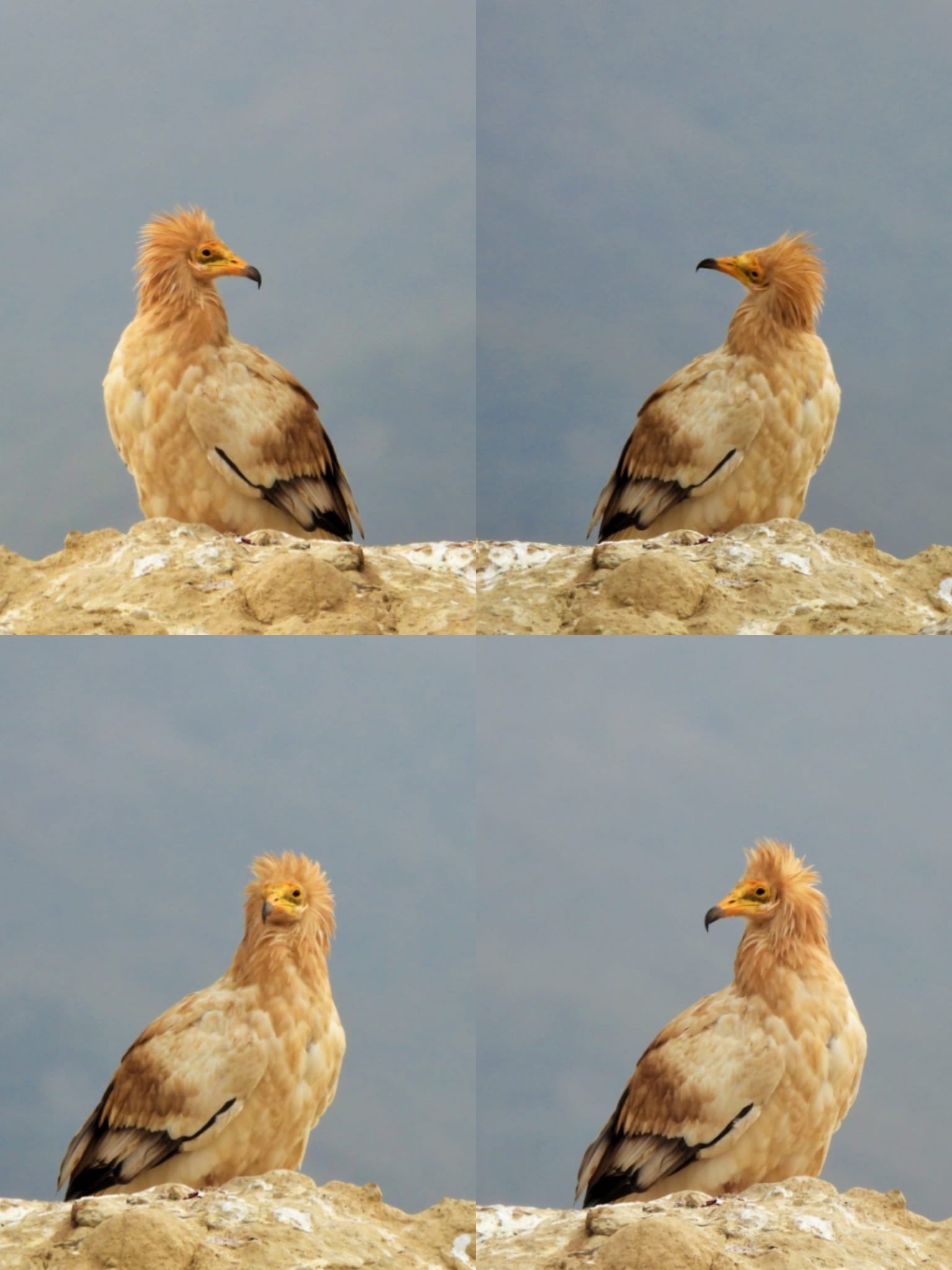Key Factors behind the Dynamic Stability of Pairs of Egyptian Vulture population in Continental Spain
In a world dealing with a biodiversity crisis, understanding the distribution and abundance of endangered species is paramount to effective conservation efforts. The Egyptian Vulture (Neophron percnopterus), one of the four species of vultures that inhabit our country, is considered one of the scarcest and most endangered species worldwide. Spain is one of the countries that hosts a greater number of individuals of the species, thus, knowing its population dynamics and the factors that determine its distribution is key to determine conservation actions.
The Conservation Team of the University of Barcelona-IRBIO, led by Dr. Joan Real, together with researchers from the University of Seville have published an article in the journal Animals, highlight the key factors behind the stability in the number of breeding pairs of Egyptian Vultures and their spatial variability in mainland Spain. The authors are Catuxa Cerecedo-Iglesias, Joan Lluís Pretus, Antonio Hernández-Matías, Ainara Cortés Avizanda and Joan Real.
The published work is based on the study of the distribution of the Egyptian Vulture over the last two decades using national censuses as a source of information, and the environmental and anthropic factors that condition its distribution over time and at different spatial scales, fundamental information to be able to implement conservation measures.
Number of breeding pairs stable, but with variable distribution over time.
The study has increased the knowledge on the temporal and territorial variation of the Egyptian Vulture population in continental Spain. The findings indicate that the population is stable at the national level after having suffered a large decline in previous decades. It is worth noting that some areas of western Spain (e.g., Extremadura and Arribes de Duero) are still solid nuclei of the population, highlighting the fidelity of this species to its breeding territories, an aspect known in most territorial raptors. However, the comparison of the distribution maps of the last three censuses showed changes in the number of pairs in some areas; while in some there was a large decrease in others there has been an increase and even areas of new colonization.
Factors influencing population distribution at different scales.
It has been shown that areas with high densities of Egyptian Vulture breeding pairs are strongly related to the presence of cattle and other vulture species, such as the griffon vulture. In this sense, cattle play a crucial role in providing carrion and faeces, a food source for this raptor. On the other hand, there is a strong interaction between Egyptian vultures and griffon vultures as they share many ecological requirements, such as breeding areas (i.e., cliffs) and food sources (i.e., carrion). This overlap makes the presence of griffon vultures an indicator not only of suitable breeding habitats but also of feeding areas for Egyptian vultures.
Other factors have a positive influence on the abundance of Egyptian Vultures at the local level, such as, for example, areas where dehesas are predominant or where there are landfills (i.e., supplementary feeding areas). In these areas the availability of food tends to be greater - in the dehesas there is a predominance of extensive livestock from which the species can take advantage, and, in the landfills, specific food is deposited for necrophagous birds - therefore, the ecosystem can support a greater number of breeding pairs. However, this study also shows the existence of factors that negatively affect the abundance (low densities) of Egyptian vultures, such as, for example, the presence of wind turbines, infrastructures with which they are known to collide. This fact raises concern about the potential threats posed by human infrastructures to the survival of Egyptian Vultures and highlights the importance of protecting areas inhabited by endangered species.
Research applied to conservation.
Dr. Catuxa Cerecedo Iglesias, first author, comments on the management implications of the study: "In our work, in which we focus on one of the most endangered vulture species, we highlight the existence of environmental and anthropogenic factors that influence the distribution of Egyptian Vultures at different scales. For example, while the availability of food from extensive cattle ranching affects the entire distribution of the species, there are other environmental factors that impact populations at the local level. Therefore, conservation strategies should be approached in a hierarchical manner, i.e., implementing different actions at different scales."
In this sense, the authors recommend that for a better conservation of this species it would be necessary, on the one hand, to implement a national strategy focused on the promotion of extensive livestock farming, to increase the availability of food for this type of scavenger birds instead of incinerated. In this way these birds would perform the sanitary role they have historically exercised. On the other hand, energy generation or transport infrastructures should be located outside the areas where the species lives, an action that would be key to avoid the abandonment of territories and reduce mortality.
In addition, Dr. Joan Real affirms that: "In a framework of changes in future scenarios towards a circular economy and sustainability, global policies are needed to enable the compatibility of these with the conservation of biodiversity and in particular endangered species, which are also indicators of the quality of our ecosystems and inhabited areas. Therefore, in addition to national and supranational global strategies, local approaches are necessary, which implies that managers, stakeholders (farmers, hunters...) and researchers work together for the conservation of endangered species and biodiversity".
Collaboration with organizations.
Finally, this study has been developed thanks to the help of organizations such as SEO/Birdlife and WWF, who have provided the data for Egyptian Vulture censuses at national level and the database of wildlife poisonings in Spain, respectively. The project was financed by the Ministry of Science and Innovation of the Spanish Government.
Source: Cerecedo-Iglesias, C., Pretus, J. L., Hernández-Matías, A., Cortés-Avizanda, A., & Real, J. (2023). Key Factors behind the Dynamic Stability of Pairs of Egyptian Vultures in Continental Spain. Animals, 13(17), 2775.
Picture: Lluis Mir.
